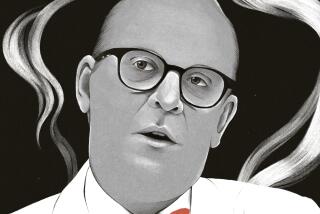Judge frees original ‘In Cold Blood’ files for publication
- Share via
The 1959 murder of the Clutter family in Holcomb, Kansas, brutal and mysterious, was made famous by author Truman Capote. With unfettered access to the investigators and confessed killers, and working at the top of his craft, Capote told the story of the murder in chilling, unforgettable detail in his 1966 book “In Cold Blood.”
The book continues to fascinate. It was made into a feature film in 1967, a television movie in 1996, and its creation was the basis of two recent biopics: 2006’s “Infamous” starring Toby Jones and 2005’s “Capote,” for which Philip Seymour Hoffman won the best actor Oscar.
Almost a half-century has passed since Capote wrote the book, and the story it tells is now fairly well-known. So why, in 2012, did a Kansas judge block publication of original files from the criminal investigation, siding with the Kansas attorney general’s office?
It may have something to do with the artistic license that Capote took. “In Cold Blood” was a signature work, often hailed as the beginning of a new form of storytelling: reportage written with the flair of fiction, later dubbed “creative nonfiction” or “new journalism.” Capote had his own term for it: He called the book a “nonfiction novel.”
What this meant was his book included a certain measure of invention. People have since gone back to the series published by the New Yorker in 1965 that would become the basis of the novel and done fact-checking to point to gaps between the record and the story.
Apparently, one detail that Capote changed was the timeline of the investigation. He wrote that after an informant named the killers, Perry Smith and Richard Hickock, the Kansas Bureau of Investigation immediately followed up. It was part of the story that showed chief investigator Alvin A. Dewey as a heroic lawmaker, tormented by the murder of the Clutter family and determined to bring their killers to justice.
But according to a 2013 report in the Wall Street Journal, which had access to original investigation documents, five days elapsed before the Kansas Bureau of Investigation sent anyone to check out the lead. One of those investigators was Harold Nye.
The Wall Street Journal based its report on documents held by Ronald Nye, Harold’s son. It’s those Nye papers that the judge blocked in 2012, and which he has now released for publication.
Harold Nye, who worked for the Kansas Bureau of Investigation from 1955 to 1975 and served as director from 1969 to 1971, was openly critical of “In Cold Blood.” “I was under the impression that the book was going to be factual, and it was not; it was a fiction book,” he told George Plimpton for his book on Capote.
The way his son remembers it, Nye “was so disappointed in Capote’s book that he read only about 115 pages before throwing it across the room,” the Wichita Eagle reports. Ronald Nye also said his father, who attended the movie premiere of “In Cold Blood,” walked out after just 15 minutes.
The senior Nye took notes during the investigation of the Clutters, the Wall Street Journal reports. Their comparison of a critical moment in the investigation in both accounts shows Nye’s version to be more routine and methodical, and Capote’s to be more dramatic.
Ronald Nye is working with a co-author, Gary McAvoy, to turn his father’s notes into a book they hope to publish to coincide with the 50th anniversary of Capote’s “In Cold Blood.”
Twitter: @paperhaus
More to Read
Sign up for our Book Club newsletter
Get the latest news, events and more from the Los Angeles Times Book Club, and help us get L.A. reading and talking.
You may occasionally receive promotional content from the Los Angeles Times.









